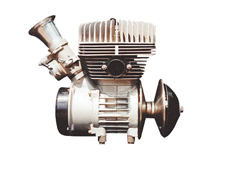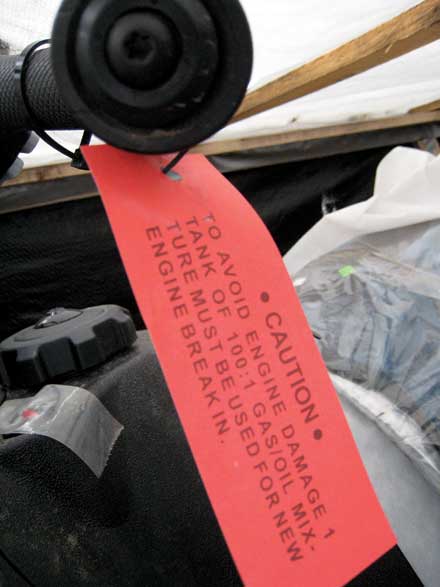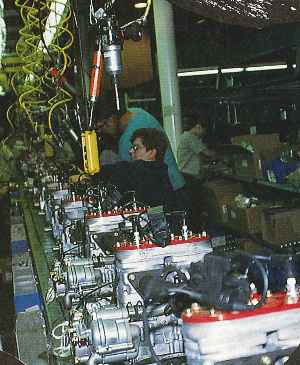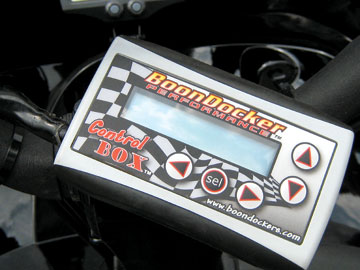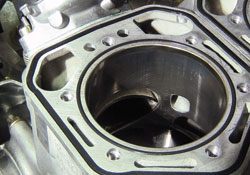Explore the science behind two-stroke snowmobile engines
 When it comes to designing a new engine, a powertrain engineer has a lot of decisions to make. If, for example, a snowmobile manufacturer’s marketing department orders a lively new two-stroke twin, the engineer needs to carefully set many specifications so the engine will make competitive power and provide responsive performance.
When it comes to designing a new engine, a powertrain engineer has a lot of decisions to make. If, for example, a snowmobile manufacturer’s marketing department orders a lively new two-stroke twin, the engineer needs to carefully set many specifications so the engine will make competitive power and provide responsive performance.
Engines in early sleds were single-cylinder two strokes that put out 7 to 14 hp. They had three moving parts — a crankshaft, connecting rod and piston — with no electronics. The crankshaft had a fan and a magneto rotor mounted to it, but they all moved with the crank. Nowadays engines are much more complex as manufacturers squeeze more horsepower out of them while burning less fuel and putting out fewer emissions.
Suck-Squeeze-Bang-Blow
The two-stroke snowmobile engine is, mechanically, very simple, but how it breathes is rather complicated. A four-stroke engine separates the intake, compression, power and exhaust strokes with the use of poppet valves, but it only makes one power stroke every 720 degrees of rotation of the crankshaft. A two-stroke engine makes power every 360 degrees of rotation.
It might seem that a two-stroke should make twice the power from an equal displacement four-stroke design, but it doesn’t. That’s because a two-stroke doesn’t breathe as efficiently as a four-stroke, but it makes more power per unit of displacement than a four-stroke.
While four-stroke engines use valves controlled by a camshaft to allow gases in and out of the cylinder, a two-stroke design uses ports in the cylinder walls to allow gas exchange. It is the height and width of these ports that control how the engine breathes and at what speed the engine makes peak power.
The intake port is the lowest port in a two-stroke cylinder. Today, most intake through these ports is controlled by a reed valve; earlier engines used the intake side of the piston skirt to open and close the intake port. As the piston rises toward top-dead center (TDC), the intake port opens and the rising piston lowers the pressure in the crankcase. Fresh fuel and air are drawn in, and as the piston passes TDC the intake port is closed. This allows compression of the fresh charge in the crankcase, and as the piston drops it opens the transfer ports to allow passage of the fresh charge into the cylinder.
The fresh mixture is compressed by the rising piston and is ignited. As the piston drops under the high-pressure burning mixture, the exhaust port opens and allows the spent mixture to be expelled.
Port Dimensions And Timing
The width of the intake port, on a piston-port engine, is limited by what the piston skirt can handle without breaking. Wider ports offer less support for the skirt. Making the port taller by dropping the port changes the port timing of the intake. On a piston port engine, the port will be open the same number of degrees of crankshaft rotation before TDC as after.
Duration of the port’s opening is limited to how long you can hold the port open after TDC before the fresh charge would blow back through the carburetor. The longer the intake port is held open, the “pipier” the engine will become. The maximum total open duration of the intake port of a piston port engine is about 160 degrees — that’s one pipey engine!
Reed valve intake systems are the most common design used today. Reed cages are mounted in the crankcase or the cylinders. Reed petals open when pressure in the crankcase drops below the pressure in the intake tract. When the crankcase pressure rises above the pressure in the intake tract, the reed closes. The actual intake event starts much sooner than a piston port intake and will close at about the same time as a piston port engine would — after TDC. The intake duration is longer with a reed valve than a piston port as the reeds admit a fresh mixture through about 200 degrees of crankshaft rotation.
Transfer passages and ports transmit the fresh charge to the combustion chamber. The passage and the port area, along with their placement in the cylinder, are critical to the clean scavenging and trapping of fresh charge in the cylinder. As many as six transfer ports can ring the sides and rear of a cylinder; the height of the transfer port determines their timing. The duration between the exhaust port and transfer port opening is critical and exhaust gases must be largely expelled and the low-pressure wave from the tuned exhaust must arrive at the same time the transfer ports open.
Intake And Exhaust Flow
Gas flow through an engine has never been more intensely studied than it is right now. Timing of the fuel injection nozzles of Ski-Doo’s SDI engine, for example, is critically connected to transfer port timing, and altering the transfer port timing on one of those engines would almost certainly lead to higher hydro-carbon emissions.
The largest port in the cylinder is the exhaust port. From the cylinder’s center, the exhaust port’s maximum width is considered to be 70 degrees. Wider ports will cause too much ring flex and the chances of the ring hooking the port are too great. To get around the mechanical limits imposed on the port width, bridged ports or triple exhaust ports are used.
Triple exhaust ports don’t utilize three, equal-size port openings. Instead, the center exhaust port is full height while the side ports are usually equal in height at the top with the center port but extend down to roughly the height of the top of the transfer ports. This allows the exhaust gas to blow down rapidly before the transfer ports open.
Exhaust port height determines the exhaust port timing. Total open duration of the exhaust port will vary from 160 degrees of crankshaft rotation on a modestly tuned engine to about 200 degrees on a competition engine. Major changes in exhaust port height must be combined with proper changes in the tuned exhaust. Raising the exhaust port also shortens the effective length of the power stroke. Tall exhaust ports mean peak power is usually made at high engine speed.
Variable height exhaust ports enable engineers to get around the limitations of a fixed exhaust port height. At lower outputs, the guillotine slide lowers the exhaust port height to allow the engine to run like it has a low exhaust port, but at higher throttle settings the slide lifts out of the way to let the engine run with a high exhaust port. The device doesn’t allow the engine to make more peak power, it simply widens the engine’s effective power-band.
By dropping the height of the exhaust port at lower speeds and part throttle settings, the overlap time of the transfer and exhaust ports being open at the same time is reduced, thereby reducing hydrocarbon emissions and increasing fuel mileage. While early variable height ports were controlled by exhaust or compression pressure, new designs are controlled by an on-board computer that trips a stepper motor or solenoid-operated valve.


